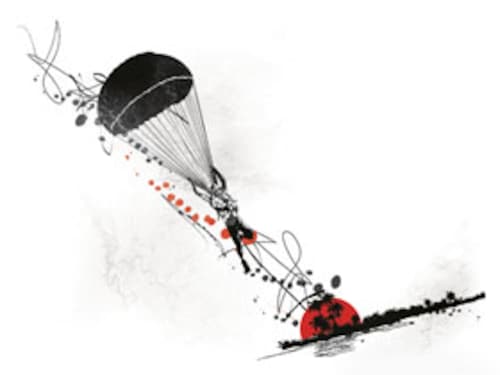

Arunachal Pradesh
China’s proposal to build dams on the Brahmaputra’s Tibetan stretch is threatening to kill the gushing tributaries of one of the biggest rivers of South Asia. The course of the Brahmaputra after it enters India sees the river drastically lose height, creating several waterfalls and rapids, making the white waters ideal for rafting. Although China has said that it would not build reservoirs with these dams and, therefore, not affect the water levels downstream, the construction of a dam on the Subansiri River tributary has already put an end to rafting on that stretch. China’s effort to generate more hydroelectricity is sure taking the charge away from India’s adventure tourism.
Mount Kilimanjaro, Tanzania
This is not just for the mountaineering enthusiast. The sheer marvel of the world’s tallest free-standing mountain rising amid the arid vastness of north-east Tanzania has fascinated and captured the imagination of innumerable people through the ages. The Africans worship their ‘White Mountain’, which is a dormant volcano. But the snows of Kilimanjaro — as Ernest Hemingway famously put it — are fast receding, thanks to global warming. Researchers claim that about 85 percent of the snow that covered the mountain’s peak had disappeared by 2007. The glaciers on the mountain are shrinking and thinning at the same time. Loss of vegetation around the mountain too is believed to have had an impact.
Turtuk, Ladakh
This border village in the Nubra Valley of Ladakh once fell within Pakistan Occupied Kashmir. Although India reclaimed it after the 1971 war, the government imposed the Protected Area Permit Regime in the area, making it off-limits for foreigners. This, however, ensured that the region’s stark beauty remain untouched. Towards the end of 2009 the government lifted its restrictions. Foreign tourists have, since then, been queuing up for Bactrian camel rides and hot water springs. There goes the neighbourhood.
The Caribbean
The coral reefs of the Caribbean are some of the world’s best for scuba diving, with consistent conditions throughout the year, and dive spots suitable for everyone from novices to PADI-certified instructors. Spots such as Bonaire and the Dutch Caribbean offer shallow diving among coral reefs while Provo, Turks and Caicos are must-visits for snorkelling. But pollution — increased levels of carbon dioxide in the sea water — and global warming are taking a toll on them: While acidic waters affects the corals’ ability to secrete new skeletons, warmer waters disrupt their growth. Frequent hurricanes don’t help either. Plan that Caribbean cruise soon.
The Western Ghats
The Marathas built fortresses that were protected by the difficult terrain and isolation. But now, with developments like the Mumbai-Pune Expressway scything through the hills and making transport a breeze, developers are conquering the Ghats. Planned cities that took advantage of changes in the land zoning regulations in the area, which converted hill and agricultural land to residential and commercial ones, are taking shape. Leading the pack: Aamby Valley (10,000 acres) and Lavasa (25,000 acres of land and 60 km of lakefront). And the Ghats, nominated for a place on the Unesco World Heritage List, home to more than 300 threatened species, and one of the world’s top 10 biodiversity hotspots, look like becoming the middle of a vast Mumbai-Pune megapolis. Get that monsoon trekking done soon.
Sinking Islands
The Maldives are the lowest country in the world. With no spot on the islands rising more than two metres above sea level, this archipelago comprises about 1,200 islands and is located south west of India, in the Indian Ocean. Over the last century, changes in global climate are making sea levels rise, threatening the existence of the beautiful country and its people. They’re not the only ones in trouble. A pristine speck in the Pacific Ocean, half-way between Hawaii and Australia, called Tuvalu (it’s one of the smallest nations in the world, better known, perhaps, as the country with the registrar rights to the ‘.tv’ first level Internet domain), will, eventually, disappear under rising sea levels. Coral reefs, atolls and lagoons: Go see them while you can.
Zanskar, Jammu and Kashmir
Part of the Kargil district, Zanskar has become famous for its frozen river trek. Also known as the Chadar Trek, the route follows the Zanskar River that freezes during the winter months. The walls of the gorges cut out by the river reveal geological layers of the Fold Mountains and are best viewed in winter. Traditionally, this frozen route was the only link between the local population and the outside world. Now, of course, there is an airport at Leh. As civilisation creeps in, the presence of tourists can be felt by the junk they leave behind at camping sites along the river. The influx of tourists is also affecting the lives of the people, who had so far led isolated lives.
Civilisation? Bah!
(Our thanks to Kai Friese, editor, Outlook Traveller, for advice on this list.)
First Published: Dec 30, 2010, 06:23
Subscribe Now(This story appears in the Sep 20, 2024 issue of Forbes India. To visit our Archives, Click here.)

